#deconstructivist architecture
Text

Daniel Libeskind
The Michael Lee-Chin Crystal at the Royal Ontario Museum, 2007
Photo: Source
#daniel libeskind#studio libeskind#architecture#deconstructivist architecture#deconstructivism#royal ontario museum#contemporary architecture#postmodern architecture#architectural design#dezeen#archdaily
33 notes
·
View notes
Text

Heinz-Galinski-Schule (1995) in Berlin, Germany, by Zvi Hecker
393 notes
·
View notes
Photo
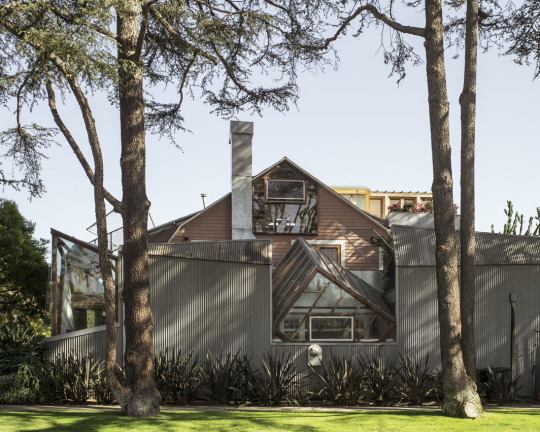

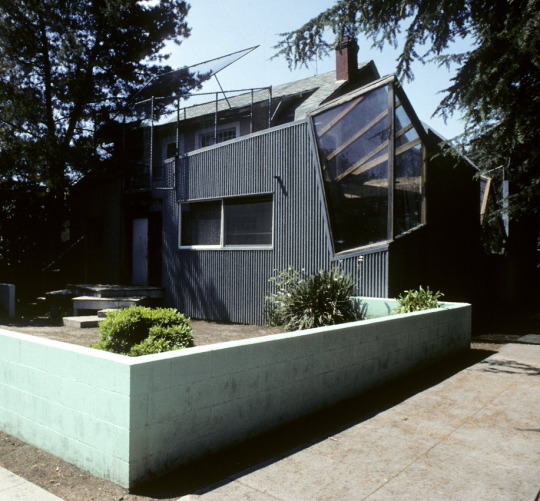
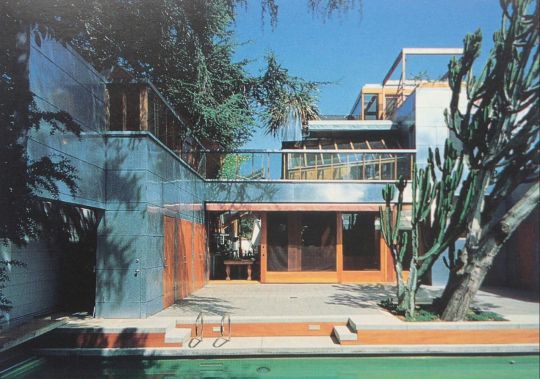

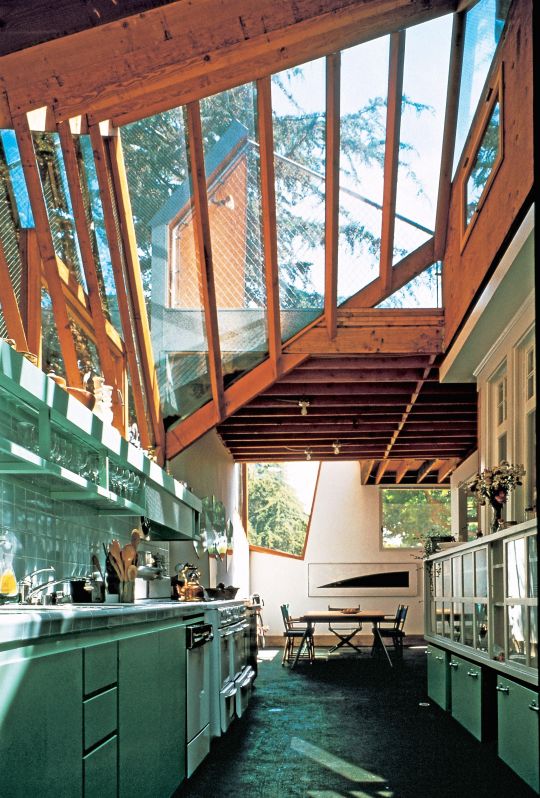
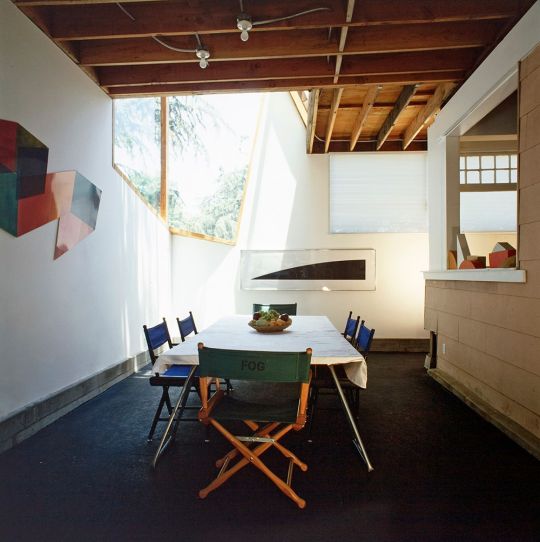
Gehry House, Santa Monica, USA - Frank Gehry
-
#Frank Gehry#architecture#building#design#modern architecture#contemporary#deconstructivist#post-modernism#quirky#abstract#angles#house#house design#interiors#living room#light#timber#glass#kitchen#usa
249 notes
·
View notes
Text

Rem Koolhaas and Joshua Prince-Ramus - Seattle Public Library (2004)
#architecture#deconstructivism#deconstructivist#architects#design#art#art history#200s#2004#21st century#seattle
4 notes
·
View notes
Photo

Wexner Center for the Arts was designed by Peter Eisenman. Photo courtesy of Eisenman Architects
#architecture#Peter Eisenman#wexner center for the arts#Eisenman Architects#dezeen#afotw#deconstructivist#deconstructivism
11 notes
·
View notes
Text
Deconstructivism

Gehry House
Definitions:
(Merriam webster) “An architectural movement or style influenced by deconstruction that encourages radical freedom of form and the open manifestation of complexity in a building rather than strict attention to functional concerns and conventional design elements (such as right angles or grids).”
(M Wigley)”A deconstructive architect is not one who dismantles buildings, but one who locates the inherent dilemmas within buildings”.
At some point between 1914 and 1918 (first world war) some Russian architects “broke the rules of classical architecture and composition”, as said on Arch daily. The designs they had drawn had abandoned the “geometric norm”(Arch daily). After lots of experimentating with shapes and forms, the architects “disturbed the traditional perception of architecture and opened people’s eys to the endless possibilities of breaking architecture rules”(Arch daily). Breaking the classic rules of architecture by ‘deconstructing’ the traditioal ways led to a revolution. People viewed construction and design differently, with open minds, as they saw the countless possibilities.
According to Owen Hopkins, Deconstructivism was “one of the most significant architecture style of the 20th century”. This is true due to the massess of change it brought along. The norms of architecture were broken - people could see that there isn’t just right or wrong anymore, things weren’t just black or white. It was clear then that things could change, they could be different - and if architecture and construction, out of all things, could be changed then surely anything could be. These new discoveries, of the 20th century, led to a philosophical movement around the world.
“An architect has always dreamt of pure form… from which all instability and disorder have been excluded”, as highlighted by M Wigley. This is what created the rules of architecture known as ‘the norms’. The rules stuck around as they worked with civilisations knowledge – which provided stability for their designs and structures.
(Kadvacorp)Characteristics:
“Unrelated forms
Abstract in nature
Smooth exterior surfaces
Contrast of shapes and forms
Large expanses of a single material (e.g. glass, metal, etc)
Simple metal door frames
Exposed materials
Window frames hidden in the walls
The word deconstruction can be very easily misinterpreted due to the words usual meaning of deconstructing a structure and dismantling it/ knocking it down. It was and is very important that people understand that Deconstructive architecture isn’t about dismantling a building but rather the separation of a design to create impurity – as explained by M Wigley, “the dream of pure had been disturbed”.
References:
AJ. “Deconstructivism - Deconstructive Architecture Style Characteristic.” Kadva Corp, 19 Feb. 2015, www.kadvacorp.com/design/deconstructive-architecture-style/#:~:text=Key%20Features%20of%20Deconstructivism%20Architecture%20Style%3A%201%20Unrelated.
“Definition of DECONSTRUCTIVISM.” Www.merriam-Webster.com, www.merriam-webster.com/dictionary/deconstructivism.
Dima Stouhi. “What Is Deconstructivism?” ArchDaily, 12 Aug. 2018, www.archdaily.com/899645/what-is-deconstructivism.
Hopkins, Owen. “Deconstructivist Architecture “Challenges the Very Values of Harmony, Unity and Stability” .” Dezeen, 3 May 2022, www.dezeen.com/2022/05/03/deconstructivist-architecture-introduction/.
Johnson, Philip, and Mark Wigley. Deconstructivist Architecture. New York, Moma, Cop, 1998, www.moma.org/documents/moma_catalogue_1813_300062863.pdf?_ga=2.145925044.1469358646.1683646190-646892538.1683646190.
Srivastava, Tulisha. “Gehry House,” Re-Thinkingthefuture, www.re-thinkingthefuture.com/2021/03/22/a3661-gehry-residence-by-frank-gehry-balance-between-old-and-new/.
8 notes
·
View notes
Text

Zaha Hadid by Allison Adams
Dame Zaha Hadid (1950-2016) was an Iraqi-born British architect, known for her radical Deconstructivist designs. In 2004 she became the first woman to be awarded the Pritzker Architecture Prize, the highest honor of her field. In the early days of her career, she became known as a “paper architect,” meaning her designs were too avant-garde to move beyond the sketch phase and actually be built. This impression of her was heightened when her beautifully rendered designs—often in the form of exquisitely detailed colored paintings—were exhibited as works of art in major museums. Her major built works include the London’s Millennium Dome, the London Aquatics Centre (built for the 2012 Olympics) Michigan State University's Broad Art Museum in the US, the MAXXI Museum in Rome, and the Beijing Daxing International Airport in China. She was referred to as the "Queen of the curve", who "liberated architectural geometry, giving it a whole new expressive identity".
#zaha hadid#Allison adams#art#artwork#female portrait#architecture#architect#herstory#female artists#women artists#woman#women#irl women/girls
1 note
·
View note
Text
10 Cool Homes by Best Architects
Several renowned architects have designed exceptional homes for themselves, showcasing their unique styles and architectural philosophies. Here are some notable examples:
Frank Gehry’s residence in Santa Monica
Frank Gehry’s residence in Santa Monica, California is a unique architectural masterpiece that showcases deconstructivist ideals. Gehry and his wife bought an existing home in 1977, built…

View On WordPress
0 notes
Text
Unveiling Architectural Excellence: Exploring Inspiring Architecture Projects
Architecture is the art of shaping spaces and experiences, and each project is a testament to innovation, creativity, and the vision of the architects involved. In this exploration of inspiring architecture projects, we delve into the diversity of design, construction, and purpose that define these exceptional structures.
1. Introduction: The Kaleidoscope of Architectural Creativity
Architecture projects are not mere constructions; they are narratives written in concrete, steel, and glass. Each project unfolds a unique story, reflecting the creativity and ingenuity of architects who turn dreams into tangible, awe-inspiring realities.
2. The Shard, London
Location: London, United Kingdom
Architect: Renzo Piano Building Workshop
An iconic symbol of London's skyline, The Shard stands as the tallest building in the city. Its sleek glass façade and innovative design not only provide breathtaking panoramic views but also exemplify modern urban architecture.
3. The Louvre Pyramid, Paris
Location: Paris, France
Architect: I. M. Pei
A harmonious blend of tradition and modernity, the Louvre Pyramid is a striking glass structure that serves as the entrance to the Louvre Museum. Designed by the renowned architect I. M. Pei, this pyramid has become a symbol of contemporary architectural excellence.
4. Heydar Aliyev Center, Baku
Location: Baku, Azerbaijan
Architect: Zaha Hadid Architects
Zaha Hadid's avant-garde design for the Heydar Aliyev Center challenges conventional notions of architecture. With its flowing, fluid forms and absence of sharp angles, this cultural center is a testament to the limitless possibilities of architectural expression.
5. One World Trade Center, New York
Location: New York City, USA
Architect: David Childs (Skidmore, Owings & Merrill)
Built on the site of the World Trade Center towers, One World Trade Center, or the Freedom Tower, stands as a resilient symbol of hope and renewal. Its elegant design and height pay homage to the strength and spirit of the city.
6. The Burj Khalifa, Dubai
Location: Dubai, United Arab Emirates
Architect: Adrian Smith (SOM)
A marvel of modern engineering and design, the Burj Khalifa pierces the Dubai skyline as the world's tallest building. Its sleek silhouette and innovative engineering make it a global architectural landmark.
7. The Eden Project, Cornwall
Location: Cornwall, United Kingdom
Architect: Sir Nicholas Grimshaw
Immersing visitors in a world of biodiversity, the Eden Project in Cornwall is a masterpiece of sustainable architecture. Its iconic biomes house diverse plant species, offering an educational and visually stunning experience.
8. The Sydney Opera House, Sydney
Location: Sydney, Australia
Architect: Jørn Utzon
An enduring symbol of Sydney's identity, the Sydney Opera House is a masterpiece of modern architecture. Jørn Utzon's visionary design, inspired by sailboats, creates a stunning silhouette against the harbor.
9. The Guggenheim Museum, Bilbao
Location: Bilbao, Spain
Architect: Frank Gehry
A triumph of deconstructivist architecture, the Guggenheim Museum in Bilbao is a sculptural masterpiece. Frank Gehry's design, characterized by flowing forms and titanium panels, has transformed the cityscape and the museum experience.
10. The Sagrada Família, Barcelona
Location: Barcelona, Spain
Architect: Antoni Gaudí
An ongoing testament to architectural devotion, the Sagrada Família is Antoni Gaudí's magnum opus. This basilica, with its intricate facades and surreal design, is a celebration of nature and spirituality.
11. Conclusion: Architectural Marvels Shaping Our World
In conclusion, architecture projects stand as living testaments to human creativity, vision, and the constant pursuit of pushing boundaries. From towering skyscrapers to cultural landmarks, each project leaves an indelible mark on the ever-evolving canvas of our built environment.
1 note
·
View note
Text
The Evolution of Architectural Styles
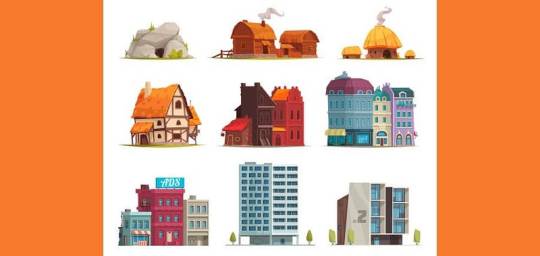
From Classical to Contemporary
As evidence of human creativity and ingenuity, architecture has undergone a remarkable journey of evolution throughout history. From the classical columns of ancient Greece to the sleek lines of contemporary structures, each architectural style reflects the socio-cultural, functional, and technological aspects of its time.
Classical Architecture- The Foundations of Beauty and Symmetry
The journey begins in ancient Greece, where the roots of Classical Architecture took hold. Characterized by its adherence to order, symmetry, and the use of architectural orders like Doric, Ionic, and Corinthian, this style laid the groundwork for many architectural principles that persist today. Iconic structures such as the Parthenon in Athens exemplify the grandeur and precision of classical design, showcasing an enduring fascination with proportion and harmony.
Modernism- A Paradigm Shift Towards Functionality and Simplicity
Fast forward to the early 20th century, and the architectural landscape witnessed a radical departure from tradition with the advent of Modernism. Rejecting excessive ornamentation, modernist architects championed functionalism, clean lines, and the use of new-age materials like steel, glass, and concrete. Pioneers such as Le Corbusier and Ludwig Mies van der Rohe embraced a mantra that “form follows function,” paving the way for a new era of architectural expression.
Contemporary Architecture- A Fusion of Innovation and Diversity
In the latter half of the 20th century and into the 21st century, architecture underwent a metamorphosis into what we now recognize as Contemporary Architecture. Characterized by a fusion of components such as curved lines, unconventional volumes, sustainable materials, and a rejection of traditional norms, contemporary architecture is a reflection of a rapidly changing world.
Neofuturism- A Glimpse into the Future of Functionality
As we stand on the cusp of the 21st century, a new architectural style emerges — Neofuturism. Rooted in functionality within urban environments, Neofuturism embraces a futuristic aesthetic. Architects explore innovative materials and design principles to create structures that seamlessly integrate with the modern urban landscape. This style symbolizes a forward-looking approach, blending technological advancements with a focus on the practical needs of urban life.
Sustainable Architecture- A Call to Environmental Responsibility
In response to growing environmental concerns, the 21st century witnessed the rise of Sustainable Architecture. This style focuses on the use of environmentally friendly materials, energy-efficient designs, and a holistic approach to construction. Architects prioritize creating buildings that minimize their ecological footprint, embracing renewable energy sources and sustainable building practices.
Deconstructivism- Unraveling the Traditional Form
In the late 20th century, architects like Frank Gehry and Zaha Hadid embraced Deconstructivism, a style characterized by the manipulation of form and the fragmentation of architectural elements. Unconventional and complex structures emerged, challenging traditional notions of stability and coherence. Deconstructivist buildings often appear as if they are in a state of flux, inviting viewers to question and explore the relationships between space and form.
Conclusion
In the evolution of architectural styles, from Classical to Contemporary and beyond, we witness innovation, functionality, and cultural expression. Each style reflects not only the technological capabilities of its time but also the societal values and aspirations that architects sought to encapsul
READ MORE: https://homendecormagazine.com/the-evolution-of-architectural-styles/
SOURCE: https://homendecormagazine.com/
Art and Decorative Accents
Home n Decor Magazine
Design and Lifestyle
0 notes
Text
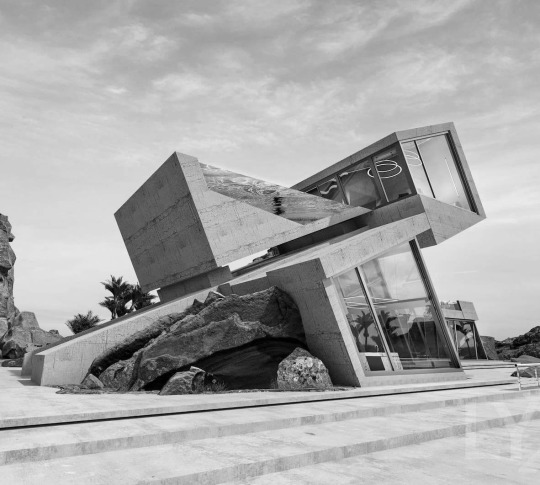
LYX arkitekter
Brutalist House, Iceland
Source
#lyx arkitekter#architecture#visualization#architectural concept#design#architectural design#deconstructivist architecture#brutalist architecture#brutalism
92 notes
·
View notes
Text
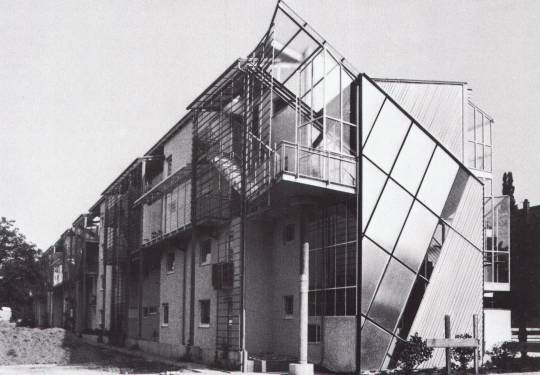
Housing Estate (1987) in Darmstadt, Germany, by Rüdiger Kramm
#1980s#housing#deconstructivism#deconstructivist#architecture#germany#architektur#darmstadt#rüdiger kramm
139 notes
·
View notes
Text
Los Angeles Architecture Firms Near Me

Exploring the Rich Architectural Landscape: Los Angeles Architecture Firms Near Me
Los Angeles, often hailed as the entertainment capital of the world, is not only a hub for the film and music industry but also boasts a diverse and vibrant architectural scene. The cityscape is adorned with iconic buildings, each telling a unique story of innovation and creativity. For those seeking to engage with this rich architectural heritage, exploring the numerous architecture firms scattered throughout the city is an enticing endeavor. In this article, we delve into the dynamic world of Los Angeles architecture firms, their contributions
Los Angeles, as a sprawling metropolis, is home to a plethora of architecture firms, each distinguished by its own style, philosophy, and approach to design. From renowned names with global recognition to emerging talents making waves in the industry, the city offers a diverse array of architectural practices.
One notable firm that has left an indelible mark on the city's architectural landscape is Frank Gehry's Gehry Partners. Gehry, celebrated for his avant-garde and deconstructivist designs, has given Los Angeles several iconic structures, including the Walt Disney Concert Hall. The firm's commitment to pushing the boundaries of conventional architecture has made it a trailblazer in the industry.
In contrast, the emphasis on sustainability and eco-friendly design is evident in the works of firms like Brooks + Scarpa. With a focus on green building practices, they have played a pivotal role in shaping the city's response to environmental challenges. Their innovative designs seamlessly blend aesthetics with functionality, showcasing an unwavering commitment to a more sustainable future.
Moving beyond the well-established names, Los Angeles is also home to a thriving community of emerging architects and boutique firms. These smaller practices often bring fresh perspectives and experimental approaches to the table. Exploring these hidden gems can reveal the city's evolving architectural narrative, where the old and new coalesce to create a vibrant tapestry of design philosophies.
As one navigates through the city's neighborhoods, it becomes evident that each district has its own architectural identity. From the historic charm of Downtown's Art Deco buildings to the modernist gems of West Hollywood, Los Angeles is a melting pot of architectural styles. Local firms, attuned to the unique characteristics of each neighborhood, play a pivotal role in preserving the city's architectural heritage while ushering in contemporary designs that reflect the evolving needs of the community.
Collaboration is a recurring theme in the Los Angeles architecture scene. Many firms work in tandem with artists, engineers, and urban planners to create holistic and integrated designs. This interdisciplinary approach not only results in visually stunning structures but also fosters a sense of community and connectivity within the built environment.
In recent years, the city has witnessed a surge in adaptive reuse projects. Architecture firms are repurposing old warehouses, factories, and historic buildings, breathing new life into forgotten spaces. This trend not only addresses the challenges of urban sprawl but also adds layers of historical significance to the architectural tapestry of Los Angeles. In conclusion, the architectural firms in Los Angeles form a mosaic of creativity, innovation, and cultural diversity. From the grandeur of iconic structures to the subtle charm of neighborhood-specific designs, each firm contributes to the city's ever-evolving architectural narrative. Exploring Los Angeles architecture firms near you is not just a journey through concrete and steel but a voyage into the spirit of a city that continually reinvents itself through the lens of design. As we navigate the complex and dynamic urban landscape, these firms serve as the architects of change, shaping a future where aesthetics, functionality, and sustainability seamlessly converge.
1 note
·
View note
Text
Rhino Grasshopper in Practice: Case Studies of Iconic Architectural Projects
In the ever-evolving landscape of architectural design, innovative tools have become instrumental in shaping groundbreaking structures. Among these tools, [Rhino Grasshopper] has emerged as a transformative force, empowering architects to bring visionary concepts to life. This blog post delves into the practical application of [Rhino Grasshopper] through a series of case studies, showcasing how this dynamic duo has played a pivotal role in the creation of iconic architectural projects.
Heydar Aliyev Center, Baku, Azerbaijan - Zaha Hadid Architects
The undulating, flowing forms of the Heydar Aliyev Center stand as a testament to the creative possibilities unlocked by [Rhino Grasshopper]. Zaha Hadid Architects utilized the parametric capabilities of [Rhino Grasshopper] to design and refine the complex curves and shapes that define the iconic building. The tool's ability to manipulate algorithms facilitated the creation of a structure that challenges conventional architectural norms.
V&A Dundee, Scotland - Kengo Kuma & Associates
Kengo Kuma's V&A Dundee is another exemplary showcase of [Rhino Grasshopper] in action. The parametric design facilitated by [Rhino Grasshopper] allowed the architects to experiment with intricate patterns and variations in the building's geometry. The result is a visually striking structure that pays homage to the natural landscape, made possible by the tool's ability to iterate and refine designs seamlessly.
Guggenheim Museum Bilbao, Spain - Frank Gehry
Frank Gehry's Guggenheim Museum Bilbao, renowned for its deconstructivist design, is yet another masterpiece shaped by [Rhino Grasshopper]. The software's parametric capabilities enabled Gehry's team to model and optimize the complex and fluid forms that characterize the museum. [Rhino Grasshopper] played a crucial role in turning Gehry's visionary sketches into a tangible, awe-inspiring reality.
The Shard, London, United Kingdom - Renzo Piano
Renzo Piano's iconic Shard in London stands tall as a testament to the precision and efficiency offered by [Rhino Grasshopper]. The tool facilitated the optimization of the building's unique glass façade, allowing for a seamless integration of form and function. The ability to visualize and analyze design variations in real-time contributed to the creation of a sleek and visually captivating skyscraper.
Dancing Towers, Seoul, South Korea - GDS Architects
GDS Architects' Dancing Towers in Seoul exemplify the dynamic and expressive potential of [Rhino Grasshopper]. The parametric design allowed architects to experiment with the towers' curvilinear forms, creating a harmonious dance of shapes. The tool's ability to handle complex geometries played a crucial role in the realization of this visually stunning architectural ensemble.
Conclusion
These case studies serve as compelling examples of how [Rhino Grasshopper] has become an indispensable tool for architects pushing the boundaries of design. The software's parametric capabilities, real-time visualization, and collaborative features have transformed visionary concepts into tangible architectural marvels. As we witness the impact of [Rhino Grasshopper] on iconic structures around the world, it becomes clear that this dynamic duo is not merely a tool; it is a catalyst for innovation, creativity, and the realization of architectural dreams. The case studies presented here are just a glimpse into the vast potential of [Rhino Grasshopper] in shaping the future of architectural design.
0 notes
Text
QCQ #3 - Structure Within a Structure
"So how could modernist structural expression be confronted other than rhetorically? When deconstruction and anti-architecture arrived in the ’80s, buildings were designed to look fragmented, unstable, incomplete—“cuts” were carefully engineered into walls, gaps introduced into floors, and columns twisted to produce an image of structure on the verge of collapse. Yet as the shock of the new wears off (it has now been more than twenty years since the epochal “Deconstructivist Architecture” show at the Museum of Modern Art in New York), it is all too easy to recognize the only destruction here as Semper’s “visual” one."
This quote from Julian Rose's article "Structural Tension" pertains to how artists like Oscar Tuazon deliberately embrace an unfinished aesthetic in their installations. Pieces that only look broken and malfunctional, yet still serve their purpose. Thinking back to the first QCQ involving making viewers uncomfortable, both ideas could go hand in hand as some nerve-wracking experiences. As in, a viewer could go inside a minimalist structure that seems to be on the brink of collapsing on top of them, and yet it's still standing. That's something Tuazon has explored, and it's a very intriguing idea.
I wonder what other artists have explored both ideas specifically. How else can one "defy logical appearance" to make viewers uncomfortable? And in what other extremes?
1 note
·
View note
Text

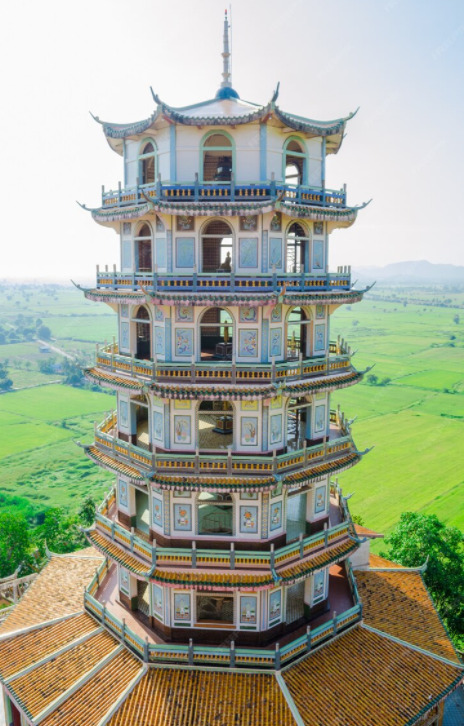
My work will be a combination of modernism and traditionalism. One side will be the tower in traditional Chinese architecture, and the other side will be Frank Ghery's structuralism.
The deconstructivist architectural style represents a variety of important concepts and ideas, some of which include:
Anti-tradition: Deconstructivist architecture emphasizes anti-tradition and breaks the traditional rules and expectations of the architectural world. It challenges the symmetry, balance and regularity of traditional architecture, emphasizing innovation and rebellion.
Complexity and chaos: Deconstructivist architecture reflects the complexity and chaos of contemporary society. It seeks to express uncertainty, change and diversity through architectural form.
Free expression: This style encourages architects to express their creativity and ideas more freely without being bound by tradition.
Conceptual architecture: Deconstructivist architecture often emphasizes the conceptual nature of architecture, and the architecture itself becomes an expression of thought. It emphasizes the audience's aesthetic and philosophical experience of architecture to a certain extent.
Uniqueness: Deconstructivist architecture is unique, emphasizing the uniqueness of each project. Each deconstructivist building can be seen as a unique work of art.
Abstraction and Formalism: This architectural style often emphasizes the abstract nature of architecture, viewing architecture as an art form rather than just a functional building.
In general, deconstructivist architecture represents an anti-traditional and innovative spirit in the architectural world that pursues complexity, uncertainty, and uniqueness in architectural design. The application of this style in architecture highlighted the importance of architecture as an art form and philosophical expression, promoting many new ideas and practices in the field of architecture.
0 notes